We all have our favorite foods – comfort foods, dishes that recall a special time or event, foods we discovered in our travels. Food nourishes, maintains, strengthens and energizes us. Cultures around the globe have recognizable cuisine that incorporates a specific set of cooking traditions, spices and flavors that are unique to that culture. Foods also tell stories. Whether you’re a gourmand or just appreciate fabulous foods in stunning locations, you may want to add these to your travel Must-Do list.

Mihir Garh
India
Mihir Garh is an exclusive nine-suite boutique hotel, a maze of luxury with private terraces, courtyards, plunge pools and Jacuzzi set in the expansive Thar Desert of Rajasthan. Here, you savor delectable cuisines that aim to please – from traditional Rajasthan dishes to the latest continental flavors. The maître d’hôtel overseeing your meal serves the same royal family his father and his father’s father did – a proud tradition. Many of the traditional Rajasthani recipes and traditional cooking methods were also handed down to the current owner by his mother, the late Rani of Rohet. In this exquisite setting, you can enjoy your meal in any one of several places within the hotel with stunning views of the surrounding desert. Explore Deserts of North India.
Hacienda of San Agustín de Callo
Ecuador
Since the 15th century San Agustin de Callo has served as Inca fortress, Augustinian convent and temporary home for the French Geodesic Mission whose scientific results helped to determine the true shape of the planet. It was built upon the site of an Inca palace, and is one of the two most important archaeological Inca sites in Ecuador. Ecuadorian cuisine here encompasses authentic high Andean dishes such as llapingachos, a type of potato cake, quinoa croquets, maize patties, and tamales (steamed corn maize stuffed with seasoned chicken, egg, chilies, olives, wrapped in achira leaves). Soups such as quinoa, timbushca, barely rice soup and the hacienda’s famous “locro”, a rich cheese and potato soup are served with slices of ripe avocado, and freshly prepared aji. Many of the specialties here use techniques from Incan traditions and date back hundreds of years. Enjoy the cuisine of Ecuador during our Ecuador: Flavors of Ecuador.
Camp ya Kanzi
Kenya
There are many reasons to come to Campi ya Kanzi, which is set on about 400 square miles, and has room for 16 guests – that works out to some 17,500 acres per guest! This is the place to seek out Africa, with its extraordinary wildlife and the ancient Maasai culture. When it comes to food, the Maasai have long been famous for their traditional diet of raw meat, raw milk, and raw blood from cattle. More recently, the Maasai have expanded their diets to include maize meal, rice, potatoes, and cabbage (known to the Maasai as goat leaves). Big Five’s president, Ashish Sanghrajka, grew in Kenya. Every time he returns, he seeks out one of his favorite Maasai dishes Ugali and Sukuma Wiki. “I was just at Camp ya Kanzi recently, and they know when they see me what I want to eat. I was delighted to be able to sit down with the Maasai chef and enjoy Ugali and Sukuma Wiki.” Ugali, also sometimes called Sima, Sembe or Posho, is a dish of maize flour (cornmeal) cooked with water to a porridge or dough-like consistency. It is the most common staple starch featured in the local cuisines of the African Great Lakes region and Southern Africa. Sukuma Weekly, often referred to as kale, is vegetable has been eaten for at least 2,000 years, with evidence that the Ancient Greeks cultivated several forms of kale. It is lightly sauteed in oil until tender, flavored with onions and seasoned with salt, which can be served either as the main accompaniment or as a side dish. Savor a stay at Camp ya Kanzi on our Precious Journeys Kenya: Kids, Cats & A Tree House.
Bamarru Plains
Australia
Kangaroo skewers, crispy barramundi with finger lime salsa and Quandong ice cream – are just a few of the dishes conjured up in the kitchen of Bamurru Plains. A short charter flight from Darwin in the Northern Territory, it is on the edge of the Mary River floodplains, close to the coast and the western boundary of Kakadu National Park. Their exceptional chef conjures up imaginative meals that incorporate native and locally sourced produce to provide a gourmet experience integrating authentic, yet contemporary Australian recipes. From breakfast dishes such as a house blend bircher museli with Manuka honey, bush apple and a dollop of vanilla bean yoghurt, to canapés out in the wilderness, to a three-course dinner hosted by your field guide, Australian bush-inspired recipes are the star here. You can watch chef create his favorite bush spiced duck confit in the open kitchen from the dinner table. Explore Bamarru Plains on our Wild Australia adventure.
Shinta Mani Club
Cambodia
The Shinta Mani Club is centrally located in the French Quarter of Siem Reap, between The Royal Gardens and the Old Market area. It is just 15 minutes from the fabled Angkor Wat. And Shinta Mani Club offers the best French food in all of Cambodia. Why? The Shinta Mani Foundation serves to educate young people in the Siem Reap community in all phases of the hospitality industry, including culinary, finance, front office, housekeeping, maintenance, restaurant, and spa therapy. In 2013, the foundation expanded its training program by setting up the Farming Development Center to help young Khmer villagers in the countryside surrounding Siem Reap. Trainees learn the most effective farming techniques to grow organic fruits, vegetables and herbs, as well to raise chickens, ducks and pigs. Graduates are helped to start and maintain their own farms as a sustainable means to rise out of poverty. Discover the food and culture of Cambodia in the Rural Landscapes of Laos & Cambodia.
Chile has a wealth of well-established attractions for travelers – from the Colchagua Wine Valley, to mysterious Easter Island, to cosmopolitan Santiago, to remote Patagonia and the great Atacama Desert. But northern Chile also offers some delightful surprises for those looking for a serious getaway from it all – places to unplug from the office, unwire from the tablet, and detach from the cell phone. A break away gives us opportunities to reconnect and recharge in wonderfully unexpected surroundings. Here, we have selected some of our favorite Chile escapes that are mostly still under the radar.

Marble Caverns of Carrera Lake, Chile
La Capilla de Caleu
This may be the best kept secret in Chile! About an hour’s drive from Santiago through small country villages is Caleu Valley, home to a small community of 600 people who still live in the colonial past. In 1834, a 23-year-old Charles Darwin, who lived in Chile for a time, hiked this area. This old “town of Indians”, with its singular beauty, had a brief time of prosperity due to the now-defunct gold mines. Today, there are no newspapers, malls, public transportation. And no tourists! What it does have is a great escape into nature. Hike from the mountain village into the Natural Sanctuary Cerro El Roble. Known for its biodiversity, it is a listed world hotspot. Native flora and birds, even condors, may be your only company on the trek to the summit of Cerro El Roble at about 7,240 feet. The summit brags the most spectacular views of the Aconcagua Mountain with the Andes Mountains to the east side and the Pacific Ocean to the west. Re-energize in Caleu on this Patagonia, Atacama & Easter Island journey.
Pucón on Liucura River
Pucón is set in an extraordinary environment of lush native forest. It is also known as the “Entrance of the Cordillera” by local Mapuche. This region of forests, natural parks, lagoons, streams and dramatic volcanoes lets you set your own pace. If you are looking to veg out, you couldn’t ask for a more scenic spot. But if your idea of a break means jumping into nature – hiking, climbing, horseback riding, kayaking, fishing, sailing, biking and exploring – then, this is the ideal starting spot for that adventurous spirit. The village is situated along the shores of the Villarrica Lake at the foot of the active Volcano Villarrica, and it still relatively unknown. In addition to the variety of active adventures, you can also learn about the local indigenous Mapuches, which translates to people of the earth. This ancient civilization has gone through a difficult history, continually facing opposition, but they have remained free and independent. Pucón has a small Mapuche Museum and many places where you can still explore the traditional Mapuche ways of living, eating and socializing. Incorporate this experience into your own personal Custom Chile adventure.
Marble Caves of Carrera Lake
The magnificent Marble Caves are partially submerged in the amazing turquoise waters of Carrera Lake in Patagonia. This is the second largest freshwater lake in South America, and one of the world’s ten deepest lakes with a maximum depth of 589 meters/1932 feet. The system of caves is stunningly beautiful. The lake sits on the border between Chile and Argentina, with the caves located approximately in the middle, on the Chilean side. Three main caves – the Chapel, the Cathedral and La Cueva Cave – can be explored with a small boat or kayak. This rare natural and unspoiled gem is currently threatened by plans to build a huge dam in the area. Experience these remarkable formations on our Chile & Argentina Natures Wonders.
Huilo Huilo, Land of the Mapuche
The Patagonian Forest is a world away from your everyday routine. In addition to plenty of activities that encompass trekking, horseback riding, mountain biking, kayaking, sailing, fishing and more, this area is another locale to delve into the living heritage of the indigenous Mapuche. They accounted for about 85% of the indigenous people of Chile. Because they were spread out and separated into family clans, the Mapuche were able to resist the Spanish invaders for 300 years. They were never conquered. The Mapuche community today is working to maintain its proud heritage through a number of initiatives, including workshops that benefit local students such as art, painting, dance, wood carving, music, and baking and chocolate-making. Take time to interact with members of this community and learn about their traditions, customs and mythology. Explore Chile’s Patagonia & Mapuche Culture
Iquique on the Coast
In July 1835, Charles Darwin, during his voyage on the Beagle, traveled to Iquique and described it as a town “very much in want of everyday necessities, such as water and firewood”. This port city in northern Chile was founded in the 16th century. Its historic district boasts several houses and buildings that showcase the wealth came to this city with the saltpeter boom of the 19th and early 20th centuries. In addition to its rich history, Iquique is a magnet for paragliding enthusiasts, who come to this coastal town for its cliffs, large dunes, wind currents and fairly consistent weather that make it possible to paraglide nearly year-round. If you want to jump into ancient history during your off-the-road getaway, petrogylphs carved into rocks, and geoglyphs, giant images carved into mountainsides, are found in several parts of northern Chile, including in the valleys of Azapa and Lluta near Arica, just 60 miles from Iquique. Add Iquique in to Patagonia, Southern Ice Fields & Northern Chile journey.
We call these the “Incredibles” because that most aptly describes the sensation you have when you experience them. They are China with a twist or off the beaten path. You can put your hand to the Great Wall or zip through Old Shanghia in the sidecar of a 1930s BMW M71 motorcycle. In Chinese, Kao Gu refers to the study of antiquities. Ruins, ancient sites and legenPingyaods of lost cities have long captivated archeologists, history buffs, world travelers and cultural enthusiasts. China is a delightful kaleidoscope of the past and the future – often in the same breath.
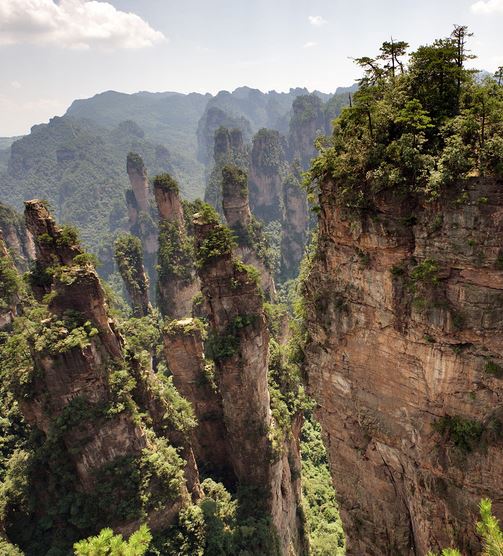
1. Wild Great Wall – Contribute to the restoration of the Great Wall
Great Wall is a symbol of Chinese civilization, and one of the wonders of the world. Section of their magnificent monument are key national cultural relics, protected under the approval of the State Council in 1961. UNESCO later listed this as a World Cultural Heritage Site. Certain segments have also been included in the New Seven Wonders of the World. The Great Wall is like a strong dragon winding its way along the mountain ridges. Travel to an area where you have the unique opportunity to contribute to the restoration of this magnificent monument by personally placing a brick in the wall. China’s Canal Cities features this and more adventures.
2. Pingyao – One of the best-preserved ancient cities in the known world
Pingyao’s old town, the Rishengcan Bank, and Antique Street are well worth discovering for yourself. During the Qing Dynasty, Pingyao was a financial center in China. Its history stretches back over some 2,700 years. It is one of the best-preserved ancient cities in the known world. A UNESCO World Heritage, the city has preserved Ming- and Qing-style residences that number close to 4,000. The streets and storefronts largely retain their historical appearance. In 1986, China designated Pingyao as one of the Chinese Historic and Cultural Cities. Explore China’s Captivating Visions & Timeless Horizons.
3. Xi’an – Xi’an City Museum
In addition to the seeing the breathtaking scale of the Terra Cotta Warriors, add a once-in-a-lifetime tour of a private room in the museum. Should special permission be granted, you will be provided a pair of special gloves and allowed special access to hold the relics within the private restoration room. Kao Gu China offers fascinating opportunities to get off the well-trod pathways.
4. Zhangjiajie & AVATAR the Movie
Yellow Stone Mountain has a cable car that climbs up the mountain, where the views encompass some of the most dramatic and breathtaking landscapes in China. In the area, you see the origin of floating Mountain from the movie AVATAR. West of Zhangjiajie National Forest Park, Huangshizhai, (Yellow Stone Stronghold), is the biggest observation platform in the area region with an elevation of 1,080 meters/3,543 and an area of 16.5 hectares/40 acres. The peculiar peaks or stone shapes form distinctive landmarks such as TianShuBaoXia (a treasure box containing a book from heaven); WuHaiShenGui (tortoise exploring in the fog sea); and XiTianMen (West Heaven Door) – all in an exhibition of nature’s incredible artwork. Craft your own ideal China journey. Visit Custom China including Tibet for more ideas.
5. Shanghai – Old Tech/New Tech
Travelers can discover old Shanghai from the sidecar of a replica of a 1930s BMW M71 motorcycle, driven by a professional guide. At the end of WWII, the BMW factory was moved from Eastern Germany to Siberia. During the 1950s, the technology was transferred to China under the name of Changjiang. The mechanics have hardly been modified in the past 50 years, which make the bikes unique and the most appropriate time machine to discover the streets of Shanghai. On the New Tech side is the Shanghai Maglev Train. This is the first commercially operated high-speed magnetic levitation line in the world. The magnetic levitation train, or maglev, has a top operational commercial speed of 431 km/h/268 mph, making it the world’s fastest train in regular commercial service. These experiences can be included in our China adventure.

Imagine standing atop a Mayan pyramid in the Guatemala rainforest. The jungle surrounding you is a jumble of trees, plants and vines in a dozen shades of green and brown. As sunset settles over the jungle canopy, you become aware of a sound rolling through the trees. What in the world? Then, someone nearby whispers, “howler monkeys.” This stunning sound comes from the depth of the forest and rolls through the trees in waves. You can even feel the rumble in your body and the spirit of the jungle in your soul.
Now imagine… your grandchildren may never be able to have this experience.
The world’s tropical and temperate rainforests are quickly disappearing. Biologists have estimated that species are being driven to extinction by the tens of thousands. A quarter or more of all species on Earth could be exterminated within 50 years due to the destruction of the rainforests.
There are no easy answers but there is hope. People and groups around the world are working to save what rainforests remain as well as other endangered environments. Once you experience rainforests in adventures like those below, you may well want to add your voice to the chorus of those looking for solutions.
Orangutans in Tanjung Putting National Park, Indonesia
Native to Indonesia and Malaysia, orangutans are currently found in only the rainforests of Borneo and Sumatra. Among the most intelligent primates, orangutan are endangered, with the Sumatran orangutan being critically endangered. They are the most arboreal of the great apes, spending most of their time in trees. They use a variety of sophisticated tools and construct elaborate sleeping nests each night from branches and foliage. Human activities have caused severe declines in the populations and ranges, including poaching, habitat destruction, and the illegal pet trade. Several conservation and rehabilitation organizations are dedicated to the survival of orangutans in the wild. Explore the world of orangutans – Indonesia in Depth.
Australia’s Ancient Daintree Rainforest
The greater Daintree Rainforest has existed continuously for more than 110 million years, making it possibly the oldest existing rainforest on the planet. It is the closest living counterpart to the forests that once covered the ancient supercontinent of Gondwanaland. The park is a vast area of tropical rainforest wilderness in the far northern region of Queensland, and is of immense biological value due to its incredible biodiversity and high levels of endemism, with its concentration of plant and animal species found nowhere else on the planet. The rainforest contains 30% of the frog, reptile and marsupial species in Australia; 430 (18%) bird species; 65% of Australia’s bat and butterfly species; and more than 12,000 species of insects. Daintree National Park is part of the Wet Tropics of Queensland and a UNESCO World Heritage Site. Incorporate this fascinating ancient rainforest into your ideal Australia adventure.
Mashpi Rainforest of Ecuador
Ecuador has the first constitution to recognize the rights of nature! Ecuador has 1,600 bird species (15% of the world’s known bird species) in the continental area and 38 more endemic in the Galápagos. In addition to over 16,000 species of plants, the country has 106 endemic reptiles, 138 endemic amphibians, and 6,000 species of butterfly. The Mashpi Rainforest Biodiversity Reserve is surrounded by lower montane rainforest and cloud forest that host a profusion of plant species, from ferns and bromeliads to hundreds of orchid species, many newly-discovered. Some 500 species of bird – including some 36 endemics – are estimated to inhabit this forest. Monkeys, peccaries and even puma make their homes inside the reserve that is crisscrossed with waterfalls. Ecuador is one of seventeen megadiverse countries in the world according to Conservation International, and it has the most biodiversity per square kilometer of any nation. Discover the magical world of Mashpi in our Private Sanctuaries of Ecuador.
Gorillas of Bwindi Impenetrable Forest, Uganda
Uganda shares the last remaining population of mountain gorillas with Rwanda. With about 700 gorillas left in the wilderness, only a handful of people will ever have the chance to encounter these incredible animals in their natural habitat. Bwindi Impenetrable Forest, a UNESCO World Heritage Site, is one of three parks that are home to these families of gorillas. The trekking can take from one to six hours, and the mountain trails can climb to altitudes in excess of 7,500 feet. The terrain is rough and, at times, muddy. Although the hike is physically demanding, the beauty of the forest and surrounding scenery make it worthwhile; and once trekkers have found the gorillas, all thoughts of fatigue vanish. Those who have spent time in the company of these gentle animals describe the encounter as the most profound natural history experience in the world. Others speak in terms of a spiritual experience. Whatever your reaction, you will be profoundly moved by the experience. Go in search of gorillas on our 11-day Uganda journey.
Peru’s Fabled Amazon Rainforest
Peru shares the mythical Amazon River basin with Ecuador, Colombia, Brazil and Bolivia. It encompasses 60% of the country and is marked by a high degree of biodiversity. Peru has the second-largest portion of the Amazon rainforest after the Brazilian Amazon. Illegal logging has become a serious threat. In 2012, the World Bank estimated that 80% of Peru’s timber exports were taken illegally. This uncontrolled deforestation will negatively affect the habitats of indigenous tribes as well as Peru’s biodiversity. Discover this amazing ecosystem during our 7-day Peru’s Amazing Amazon.
Agriculture involving domestication of plants and animals was developed some 12,000 years ago. Identifying the exact origin of agriculture, however, remains difficult because the transition from hunter-gatherer societies began thousands of years before writing. Between about 8000 and 3500 BCE, increasing numbers of humans shifted to dependence on cultivated crops and domesticated animals for their subsistence. While westernized countries today often center on mega-farms and gigantic agricultural projects, many areas of the world still use centuries-old techniques handed down by their forefathers. The villages and rural regions of Indochina have kept alive those earlier farming methods. The “agri-adventures” below offer insights into the development of societies and communities as well as to the everyday connections we have with the food we eat.
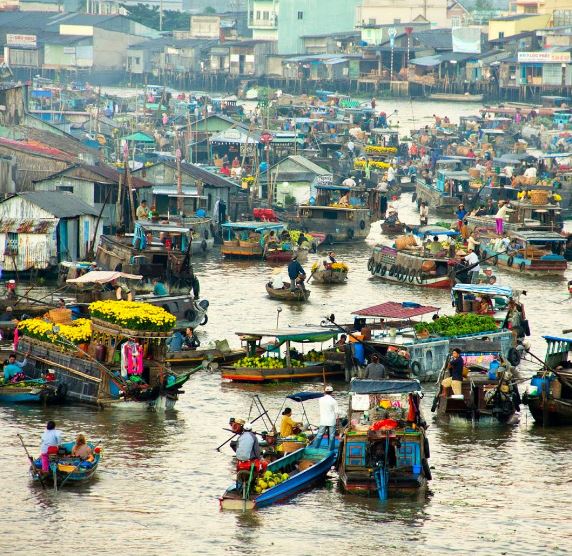
Floating Vegetable Markets, Mekong Delta, Southern Vietnam
1. Rice Paddies, Luang Prabang, Laos
Rice is a vital staple for many across Southeast Asia. Outside Luang Prabang, you can explore an organic vegetable farm and rice fields. Many of us are generations removed from the land our forefathers understood. Here you have the opportunity to participate in a Living Farm experience that takes you through the 13 steps needed for growing, harvesting and cooking sticky rice, using age-old tools and methods. You step into someone else’s shoes and reconnect with the land as you also gain better appreciation of everyday life for these hardworking rural people. This experience can be incorporated into Myanmar, Cambodia & Laos: Minority Tribes of Indochina
2. Pepper Farm, Kep, Cambodia
The coastal countryside surrounding the city of Kep is incredibly scenic and dotted with traditional Khmer villages, seasonal rice paddies – and pepper! The well-known Kampot pepper plant is only produced in half a dozen districts of the Cambodian provinces of Kampot and Kep, and it is the first Cambodian product to enjoy the EU’s protected geographical status, which certifies the origin of regional foods. Visit an organic pepper farm nestling amid fruit and vegetable plantations in the heart of Cambodia’s famous pepper region. This experience can be enjoyed on our Rural Landscapes of Laos & Cambodia.
3. Floating Gardens, Inle Lake, Myanmar
The people of Inle Lake grow vegetables on floating islands, a collection of floating weed and water hyacinth. These ‘islands’ can be cut, dragged by boats and be sold like a piece of land. Locals grow vegetables and fruit in large beds are formed by extensive manual labor. The farmers gather lake-bottom weeds from the deeper parts of the lake and make them into floating beds anchored by bamboo poles. These gardens rise and fall with changes in the water level, and so are resistant to flooding. The constant availability of nutrient-laden water results in these gardens being incredibly fertile. Explore the many facets and traditions of the lake in our Myanmar journey.
4. Floating Vegetable Markets, Mekong Delta, Southern Vietnam
The Mekong River delta produces about half of Vietnam’s total agricultural output. Indeed, the region has recently been dubbed a ‘biological treasure trove’ for the more than 1,000 new species of plants that have been found in newly explored areas. The delta is known for its floating markets such as those in Phung Hiep and Cai Be. Farmers from the region bring their fresh fruits and vegetables to the markets. Countless boats take part in the floating market trade, even in locations not accessible by car. The largest and most popular floating market is in the city of Can Tho, where you can buy everything you need for your menu – from fresh fruits and vegetables, to meat, to rice wine. But you have to be early to catch the action at these markets. The biggest floating market in the delta, for example, is Phung Hiep, which is open between 4.00 am and 11.00 am. Cai Be, one of the many floating markets in southern Vietnam, was formed in the 19th century. Create your own Vietnam itinerary that includes the massive Mekong Delta in our Custom Vietnam Tour.
5. Organic Farms, Song Saaa Island, Cambodia
The Journeys of Change programs here provides guests with the opportunity to explore the organic farms of the island as well as other philanthropic projects. Guests learn about the work being done to promote a sustainable future for the people and places of the Koh Rong Archipelago. Participants will experience one of the last remaining untouched environments in tropical Southwest – with pristine sand beaches, swaying coconut palms and fringing coral reefs; while finding themselves energized by the beauty of the environment and spirit of the Archipelago’s people. Explore this beautiful island on our Thailand & Cambodia adventure.
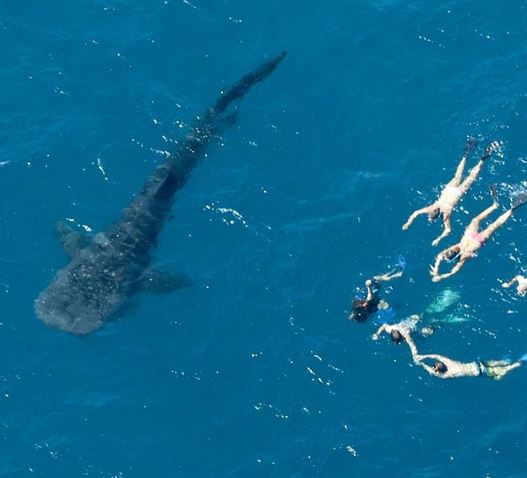
Dive the Ningaloo Reef with the whale shark– the world’s largest fish.
Australia is old-world rainforests, sophisticated cities, unique railway journeys, extraordinary landscapes, stellar lodges and inns and an extravagance of cultural encounters. It is a brilliantly diverse destination that satisfies nearly every interest – from cosmopolitan Sydney to the rugged Northern Territory to eccentric Tasmania. In addition to the country’s well-known gems such as Uluru Ayers Rock and Kata Tjuta (The Olgas), and the Great Barrier Reef, make room for some lesser known adventures.
Save the Devil
Coles Bay, Tasmania
Some of you might remember the little whirling Tasmanian Devil from the Road Runner cartoons. This fabled creature is now in a battle to survive, and you can help. This is another example of how our guests make a difference simply by staying at a specific lodge. Saffire Freycinet is one such lodge. It has teamed up with Save the Tasmanian Devil Program, and is a key sponsor of the Menzies Research Institute’s quest to develop a vaccine for a disease that is decimating the species. The population of these marsupials has declined by more than 80 percent; and in the northeast region that number is about 95%. In addition to other support, the lodge also maintains a one-hectare, free-range devil enclosure – a sort of retirement home for mature devils that have been part of the breeding program. This enclosure provides a safe environment and high quality of life while also giving guests at lodge a unique opportunity to see Tasmanian devils in a natural setting. Southern Australia & Tasmania journey includes a stay at Saffire Freycinet.

Help save Australia’s tasmanian devils.
Tracking Dinosaurs
Mt Morgan
In a far corner of an old gold mine are the massive Mt Morgan fireclay caverns, which were excavated by miners more than a century ago for the purpose of lining the mine’s furnaces during the smelting process. The first evidence of dinosaur prints came only in the 1950s, some 30 years after the caverns were abandoned. Today more than 300 prints have been discovered located in the cavern’s ceiling. They date back 200 million years ago in the early Jurassic Period, and remain some of the finest dinosaur tracks in Australia. You can explore these fascinating caverns on our Kao Gu Australia.
Helicopter Picnic
The Kimberley
In The Kimberley, El Questro Homestead is an exclusive retreat cantilevered over the magnificent Chamberlain River amid rugged landscapes. The homestead offers unrivalled access to the far reaches of The Kimberley in unique style and comfort that includes excursions in an open-door chopper. Truly exhilarating! Amaroo Falls was discovered in the Southeast area of the property in 2010. The falls with 15 cascading waterfalls is only accessible by helicopter. The falls, several pristine swimming holes and spectacular views make this a magical and romantic spot for a picnic. Experience all The Kimberley has to offer on our Northern Australia.
Walk with the Brothers
Cooya Beach
On the coast of New South Wales, the area surrounding Cooya Beach has long been primarily farmland, but more people are discovering the area’s outstanding coast line and Shoalhaven River. This traditional fishing ground of the Kuku Yalanji people has three diverse ecosystems – beach, mangroves and coastal reef. Explore the Aboriginal culture here with the Kubirri Warra brothers of the Kuku Yalanji Cultural Habitat as guides. As you walk with them through their traditional lands, they share their stories and heritage with you, and teach you traditional hunting and fishing techniques such as tracking animals and catching fish, mud crabs and even mussels in the mangroves. You discover traditional bush food, tucker, and bush medicines. Find out how we can include Cooya Beach in your perfect Australia program.
Diving with the World’s Biggest Fish
Ningaloo Reef
Stretching along Western Australia’s harsh and arid coast, the Ningaloo Reef is an extraordinary yet largely unknown jewel of Australia’s natural heritage. Here, you can dive with the giant whale shark – the world’s largest fish – (April – June). Wild Australia takes you to Ningaloo Reef and beyond to enjoy some singular adventures in dramatic surroundings.
Castles have been in use in Europe since the Middle Ages, serving as fortified structures and usually as the residence of lord or noble. The earliest fortifications were in the Fertile Crescent, the Indus Valley, Egypt, and China. Japanese castles evolved from wooden stockades and came into their best-known form in the 16th century. Castles in Japan were built to guard important or strategic sites, and almost always incorporated the landscape into their defense. Not usually fortified, palaces are grand residences, home to royalty, heads of state or other high-ranking dignitaries. Some of the best examples of that can be seen in the magnificent heritage properties of India that now serve as luxurious hotels. Here are some favorites.
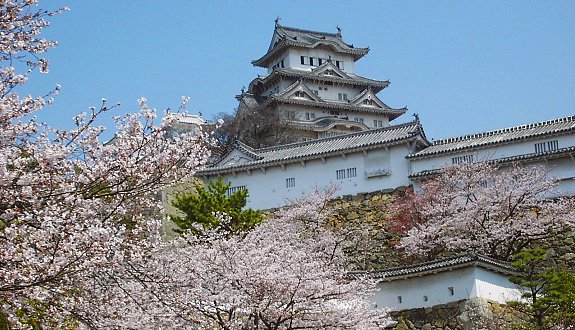
Himeji Castle in Japan
Himeji Castle
Himeji, Japan
Known also as White Heron Castle with its remarkable white exterior, Himeji is the most visited castle in all of Japan. It was the first national landmark to be added to UNESCO’s World Heritage Sites list. The castle started as a fort in 1331 but over the centuries, the ruling warlords each left their mark, adding to the structure. The Himeji Castle complex of today was finally completed in 1609. Unlike other Japanese castles, it has never suffered serious damage due to earthquakes, fires or wars. The best time to visit this striking castle is in the first half of April, during the cherry blossom. You can incorporate this exquisite castle into your ideal Japan adventure.
Forbidden City
Beijing, China
From 1416 to 1911, the Forbidden City was the seat of supreme power in China. Four towers rise above the city walls, which are approximately one meter/three feet thick. It stands as testimony to the endurance of the Chinese civilization during the Ming and Qing dynasties. Its manicured gardens surround 114 buildings with 10,000 rooms. It houses priceless furniture and rare works of art. The Imperial Palace also contains an important library and represents the old ruling class of China. Explore this vast, ancient complex on one of our dynamic China journeys.
The Paço Imperial
Rio de Janeiro, Brazil
This Imperial Palace, previously known as the Royal Palace of Rio de Janeiro and Palace of the Viceroys, is a historic building in the center of the Rio. This is probably the least palatial looking on our list, but this 18th century residence was home to the colonial governors of Brazil. From 1808, it was used as a royal residence by King John VI of Portugal as King of Portugal, and later also as King of Brazil. Some 14 years later, it became the city palace of the monarchs of the Empire of Brazil, Pedro I and Pedro II, who used it not as a residence, but as a workplace. It was one of the main political centers of Brazil for nearly 150 years, from 1743 to 1889. The Paço Imperial is also remembered as the place where Princess Isabel signed the Lei Áurea in 1888, the law abolished slavery. It is one of Brazil’s most important historic buildings and today serves as a cultural center. Explore all that Brazil has to offer
Balaram Palace
Balaram, India
Now a luxury resort, Balaram Palace was once the hunting retreat of the Lohani Nawab of Palanpur. It was built between 1922 and 1936 by the 29th ruler of Palanpur. Its graceful form is in the neo-classical and baroque architectural style. It sits amid the Aravallis Mountains in the Balaram Ambaji Reserve Forest at the tip of North Gujarat bordering Rajasthan. The palace features 13 acres of terraced land rising from a hilly stream and surrounded by lush green gardens and designed flower beds. Discover India’s extraordinary heritage hotels on India – Gujarat & Karnataka, and our other India passages.
Potala Palace
Lhasa, Tibet Autonomous Region, China
The Potala Palace is a graceful but monumental structure in Tibet. Rising high on a hill above the Lhasa Valley, it was built in 637 CE by Emperor Songtsen Gampo. In the 17th century, the palace was integrated into the foundations of some of the greater Tibetan buildings you still see today. The construction required more than 7,000 workers and 1,500 artists and craftsmen to complete. The palace now houses dazzling artifacts on display for the world to see. Tibet is on many serious travelers’ must-see lists. If it’s on yours, take a look at Tibet: Legends of Shiva.
The Spring Break vacation period in early spring is celebrated at universities and schools throughout the northern hemisphere as well as many countries from England to Guatemala, Japan to Germany. It is often tied into Easter, and is also known Easter vacation, Mid-Term Break, and study week. It’s a great time to revitalize and stimulate body, mind and spirit by doing something utterly different. Here are just a few ideas.

Explore the caves of San Ignacio, Belize
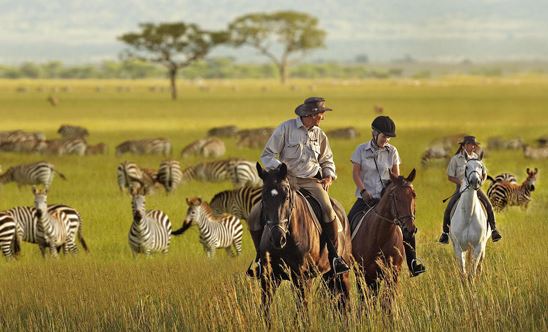
Tanzania remains one of the most prized safari destinations on the African continent. From trekking Mt Kilimanjaro to the great wildebeest migration to indigenous communities, Tanzania is an exceptional destination. While it has long been known as the perfect safari companion with its neighbor Kenya; it is gaining attention on its own as new private conservancies begin to flourish to protect vital wilderness regions and to offer unprecedented opportunities for health, education and employment to local communities. Tanzania has a wonderful array of adventures to try out – from mild to wild.
1. Chimpanzee Tracking
The Mahale Mountains National Park in the western mountains of Tanzania is home to some of the Africa’s last remaining wild chimpanzees, a population of roughly 900 individuals. They are habituated to human visitors by a Japanese research project founded in the 1960s. This is likely Africa’s most studied chimpanzee population. Tracking the chimps of Mahale is a magical experience, even as access to the chimps is becoming more restricted. In addition to keeping company with chimps, you can enjoy a range of activities from hiking to dhow trips across Lake Tanganyika to swimming in waterfalls. Ask us how we can add the chimps of Mahale (two to three days recommended) to a Tanzania adventure for you.
2. Horseback Riding
Imagine galloping among hundreds of wildebeest, zebra, giraffe and cape buffalo. In Manyara Ranch Conservancy, you can set out on half-day rides in the company of skilled equestrian guides for a truly remarkable experience among Africa’s finest wildlife including elephants, lesser kudu, gazelle, oryx and eland. There are also lion, cheetah, leopard, hyena and jackal. NOTE: Rides can only be booked for experienced riders. For the riding enthusiast, take a look at our 15-day Kenya & Tanzania: View from Here, East Africa by Horseback.
3. Walk the Slow Safari
Chem Chem, in the Burunge Wildlife Management Area, developed the concept of a “slow safari” out of a deep passion for the African bush. In essence, a slow safari allows you to experience Africa at its most raw – it is a tangible, sensual experience beyond the confines of a vehicle, where you go on foot, see, feel, touch and smell the African bush. It encompasses walking safaris with a private guide in the camp’s private wildlife concession, learning to read wildlife tracks and spoor, savoring wilderness picnics, visiting true Maasai villages, dining under the stars and simply taking the time to be still and absorb the expansive Tanzanian landscape with a glass of Pinot Noir in hand. To explore the slow safari, visit Private Conservancies in Tanzania.
4. Mountain Biking
In the Ngorongoro Highlands, you can savor a ride to remember. The elegant Manor at Ngorongoro, with just ten luxurious cottages/20 suites, is a stunning lodge blending East African hospitality with old-world Afro-European architecture and decor. It is reminiscent of an elegant up-country farm home in the Cape Dutch-style of architecture. The hills that The Manor sit atop are perfect for mountain biking with trails that offer both up and downhill rides that thrill and invigorate in stunning scenery. You cycle with a guide, who will tailor your cycling adventure to your level of activity – easy or arduous. Mountain biking and a stay at The Manor at Ngorongoro can easily be incorporated into programs such as our 10 day Tanzania.
5. Safari by Boat
Selous Game Reserve in southern Tanzania is a UNESCO World Heritage Site, and home to a third of the Tanzania’s elusive and highly endangered Africa wild dog and also has the highest number of elephant. The sprawling Rufiji River encompasses wide-open water, lakes and channels. This is the only reserve in Tanzania that offers boating safaris in addition to walking and vehicle safaris. Slip along the waterways in a flat-bottom boat past pods of hippos, crocodiles, and water birds, spot animals that come to drink along the banks. Our Southern Tanzania journey that takes you into some of Tanzania’s remarkable and lesser visited parks.
Below are five reasons to vote for us in Travel+Leisure’s 2015 World’s Best Awards. As our partners and loyal guests, you have always been so generous with your support. We hope you will take a moment to cast your vote for us in the category of Tour Operators & Safari Outfitters.
Thank you in advance for your continued support.
Photographers are ever in search of just the right light in just the right setting to capture a mood, a place, a person. We, too are always on the lookout for locales, activities or events that capture the essence of why we travel – be that someplace new or revamped, noteworthy or just plain cool. Sometimes, they are hidden in plain sight. We love customizing adventures that help you capture the spirit of your life.
1. Akaroa, New Zealand
Switch off, log out, unplug! That is what you will want to do when you check into the tranquil farm of Annandale. Set amid a rugged landscape of hills and bays on Banks Peninsula, this historic, five-bedroom homestead offers luxurious accommodation for up to 12 guests in a private setting. Three other private and secluded villas, each have their own character, are available. Sample rural New Zealand off the tourist trail in a spectacular coastal setting. On this 4000-acre sheep and cattle farm activities include hiking, biking, fishing, kayaking or sailing in this captivating landscape of hills, valleys and bays, with over 10 kilometers/6.2 miles of dramatic coastline. The chef also offers cooking classes using fresh, local products. In the nearby village of Akaroa, you can opt for fishing charters, day cruises, diving charters, dolphin-watching and dolphin-swimming tours, water skiing, jet boating and more. Let us help you discover this world away from it all in a customized New Zealand adventure.
2. Carrera Lake, Chile
Set in Patagonia, Carrera Lake is the second largest freshwater lake in South America and one of the world’s ten deepest lakes. Here you find the magnificent Marble Caves partially submerged in the turquoise waters of the lake. The marble system of caves is a network of what many consider to be the most beautiful caves in the world. The lake sits on the border of Chile and Argentina, with the caves located approximately in the middle on the Chile side. The caves can be explored by a small boat or kayak. This rare natural and unspoiled gem is currently threatened by plans to build a huge dam in the area. You can experience the Marble Caves on our Chile & Argentina – Nature’s Wonders.
3. Jamtara, India
Situated in the village of Jamtara, near Pench National Park, Jamtara Wilderness Camp is a 12-tent luxury property in the heart of rural Pench. Surrounded by tall Arjuna trees and an ancient Banyan rooted on a dry riverbed, each tented room overlooks the forest. Here you experience an India that has not yet joined the modern rush. The area is thought to be the original setting of Rudyard Kipling’s famous The Jungle Book. This park is also known for water rafting. It is the 19th Project Tiger Reserve and has remained one of the best-kept secrets among wildlife enthusiasts. The diverse wildlife include leopard, tiger, jungle cat, wild dog, sloth bear, wild boar, mongoose, gaur, spotted deer and sambar. Explore this fascinating region in our newest Precious Journeys collection: India – Saving Tigers
4. Southern Serengeti, Tanzania
In Tanzania, Mwiba Lodge is a secluded nine-tent camp set among massive stone boulders, ancient coral trees and acacias, overlooking a rocky gorge on the Arugusinyai River. This former hunting area is now a private 60,000-acre wildlife reserve adjoining the southern Serengeti bordering onto Ngorongoro Conservation Area’s westernmost boundary. It was established to improve conservation efforts and expand the wildlife viewing areas to the south of Serengeti National Park. The Serengeti wildebeest migration reaches this area between December and April. You can participate in walks with Mwiba scouts to explore the bush, savor an authentic cultural experience at the local community, savor morning and night game drives and enjoy cycling. We can incorporate a stay at Mwiba Lodge during one of our Tanzania adventures.

Mwiba Lodge, Tanzania
5. Eastern Cape, South Africa
Kariega Settlers Drift is a new luxury tented lodge set on a wooded hillside overlooking the Bushman’s River. It is a five-star property in the family-owned Kariega Game Reserve. This well-established reserve in South Africa’s malaria-free Eastern Cape is home to all the Big Five and much more. It is an easy drive from Port Elizabeth, and is close to the coast so you can also enjoy a day at the beach in addition to canoeing, fishing, river cruises and bush walks and safari game drives. At the main lodge, sleek, contemporary spaces are comfortably furnished for relaxation with a beautiful swimming pool. Experience this wonderful camp on our South Africa – Cape Town & Eastern Cape.
We understand that with so many amazing places in the world, it can be tough to decide where to travel next! That’s why we rounded up some of the hottest travel destinations for 2015, and came up with this quiz to determine where you should visit this year. Enjoy, and let us know in a comment which result you get!
As we move into 2015, we are launching a new “Press” section of our website to help keep you informed about Big Five. You will find it under “What’s New” as well as through our Media Center.
Travel Pulse: Hawkins International Releases Top Travel Trends of 2015
by Ryan Rudnansky, January 08, 2015
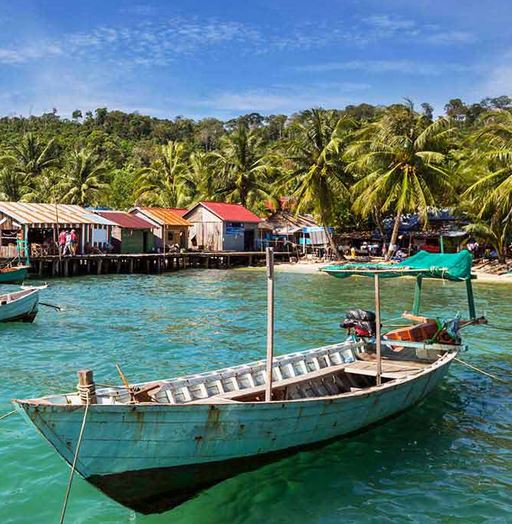
Kep, Cambodia
We begin the new year with some suggestions you might want to add to your travel dream list. Some of our choices for adventure this year offer additions to classic destinations. Australia’s Arnhem Land, for example, is where you’ll discover a 20,000-year-old Aboriginal culture. And, Madhya Pradesh, India, is home to India’s priceless tiger reserves. Join us and explore this amazing planet, our home.
Arnhem Land, Australia
No destination is hotter heading into 2015 than Australia. It has so many iconic images – from the Sydney Opera House to the great Outback. But this is the year to venture beyond the ordinary into the true outback. Discover the famed buffalo stations of the north and the homesteads of 20,000-year-old Aboriginal culture. Encounter the authentic Aboriginal tribes of Arnhem Land and head south to the UNESCO World Heritage Listed Kakadu National Park. Explore the Flinders Range or Ningaloo Reef, among many other sites, that fewer than seven percent of international tourists ever see. Come to Wild Australia.
Salta, Argentina
Argentina has long been known for the passionate tango, great wines and dramatic landscapes. Another area that is finally receiving recognition is Salta. Dating back to 1582 and founded by the Conquistadors, Salta offers a great scenery from canyons in the desert to mountains and salt flats. Like Northern Chile, Salta enjoys a strong cultural influence from the Aymara culture, who are usually thought to be only in Peru and Bolivia. This the only known area in Argentina to have such influence. The accommodations in Salta are another draw with boutique hotels, many of which are former colonial homes. Visit our Custom Argentina Tour page for more ideas to combine with Salta, or call one of our Destination Specialists.
Madhya Pradesh, India
The area in the interior of the state of Madhya Pradesh is where travelers will find the best tiger viewing. The tiger preserves and the eco camps that now exist there represent the cutting edge in environmental conservation today combined with an active approach to the conservation of the elusive tiger, one of the most endangered cats in the world. The new safari experiences in India feature conservation involvement along with the delight in staying in the very first, under-the-skies “star bed” experience in the entire country. The reserves are easily combinable with the better known areas of the north such as Agra, Jaipur, Udaipur, Delhi or Mumbai. And now with the new e visa process, the wilds of India offers among the most authentic of experiences in India beyond the well documented history of the Mughals. Explroe the world of tigers in our new India – Saving Tigers 12-day journey. https://bigfive.com/tour/precious-journeys-india/
Kep, Cambodia
Angkor Wat is what comes to mind when most people think about Cambodia. In 2015, the scene is shifting to river cruising aboard the new MV Aqua Mekong, and also to the coastline around Kep, home to the simple luxury and authentic culture of Cambodia. Pepper farms are famous in Cambodia, however, few have been actually visited until now. Kep is the home to these famous farms and represent some of the last remaining original agricultural communities in Cambodia. Combining this with Angkor Wat has never been easier. And, now, in addition to ancient temples, options are blossoming to include zip lining and quad biking away from the tourist areas. Rural Landscapes of Laos & Cambodia explores this fascination area.
Serengeti Plains, Tanzania
With the tourism recovery beginning in Africa, Tanzania is at the forefront of this drive, and it starts with innovation. The threat poaching represents to the wildlife experience in the African continent is well documented and devastating. Tanzania is now answering the call with conservancies and sanctuaries being formed at breakneck speed all across the plains from the Serengeti to Mahale. These conservancies, some formed under a land conservation grant, involve the local communities, which is the key to preserving the authentic safari experience. The entire safari product as we know it is in the process of being totally re-invented with the focus more on conservation than ever before. And, you can see that happening in Serengeti National Park with the Serengeti Cheetah Project, the source of much of what is known about wild cheetahs today, including their ecology, ranging patterns and behaviors. Discover the new face of safari in Tanzania.
Africa! It tugs at the heart strings of most every ardent traveler. As the original home of Big Five’s headquarters and of Big Five’s founders, the spirit of Africa remains at the very heart of the company. We are passionate for and about the massive continent that encompasses 20 percent of the total land area of the Earth, and is home to more than a billion people. From the most northerly point, Ras ben Sakka in Tunisia, to the most southerly point, Cape Agulhas in South Africa is a distance of approximately 5,000 miles. Travelers will always return to Africa, compelled by its incredible wildlife, wondrous landscapes, archeological treasures beyond measure, and resilient peoples.
Join us in 2015 for our webinar series #whyiloveafrica.
Morocco’s magic: Part of Africa yet a world apart, Morocco is gaining a lot of attention lately from our travelers. It may be the fascinating study in contrasts – old world medinas and modern chic boutique shops, sophisticated cities and picturesque rocky coves. It may be the North Africa cultures of traditional Berber towns or luxury resorts along white beaches. Morocco also has a fantastic array of Jewish history sites. Whatever the reason, Morocco is definitely on many wish lists for 2015. Morocco: Splendors of the Berber South takes you beyond the famous Imperial cities to explore the villages of the Atlas Mountains and beyond.
Egypt’s comeback: Egypt is reclaiming its place on travelers’ list of must-do destinations. And rightly so. No other country can claim the sheer size and scope of Egypt’s antiquities, from the extravagant pyramids of Giza, to the royal tombs in the Valleys of the Kings and the Queens, to legendary cities of Cairo and Alexandria. While many nations are blessed with archeological treasures, few can compare to extraordinary Egypt, still a preeminent destination for scholars and students, archeologists and travelers, and for all who are fascinated with the history of humankind. Come explore Egypt with us.
Return of Zimbabwe: Once one of the richest countries in Africa, Zimbabwe is just beginning to come out of a long troubled period. It has been off limits to most of us, except for quick visits to the Zimbabwean side of Victoria Falls. But it is coming back slowly, and it has some gems to offer travelers beyond the famous falls such as a camp in a remote northeastern corner of Hwange National Park, one of Zimbabwe’s premier wildlife destinations; Lake Kariba, where you can do a walking safari; and Mana Pools National Park in the heart of the Zambezi Valley. Zimbabwe is well worth a spot on your adventure list.
Namibia’s Nomadic Traditions: Namibia is home to one of the last truly nomadic communities remaining in Namibia and indeed Africa. For centuries, the Himba people have lived a relatively isolated existence. Basically, Herero in terms of origin, language and culture, they are semi-nomadic pastoralists who tend to move from one watering place to another several times a year to seek grazing for their goats and cattle. The Himba, Tjimba and other Herero people who inhabit Namibia’s remote northwestern Kunene Region are loosely referred to as the Kaokovelders. You have the opportunity to visit a Himba settlement in our Namibia- Desert & Beyond.
South Africa -World of Meercats: Most people have an image of the Kalahari as a lifeless desert, but that couldn’t be further from the truth. The diversity of habitat and climate has resulted in a diverse animal population. There are about 80 species of mammals and approximately 240 species of birds. The open habitat makes game viewing excellent and the animals can be appreciated within their habitat rather than amongst bushes. Here, you have lions with black manes, rare desert black rhino, a separate sub species to those in the east of southern Africa and aardvark. At Tswalu Kalahari, the star is undoubtedly the dark eyed, marvelous meercat! This is one of the few places, where you can see these small members of the mongoose family. Here, Tswalu’s meercat families are quite used to people so you can get close. In fact, don’t be surprised if you find one standing on your hat. You will meet these little guys during our South Africa journey.

The world’s spectacular houses of worship beckon both believers and non-believers. The majesty, architecture and sheer presence of these structures attract even the casual visitor. Each is a gem of art with a unique history. Some are grand and sweeping while others are more modest. Many have played key roles in world events. We often take comfort in the beauty of these magnificent edifices. Here are five that we find especially interesting.
Las Lajas Sanctuary, Ipiales, Nariño, Colombia This remarkable Roman Catholic Church was completed in 1949. The beautiful Gothic Revival church is one of the major hallmarks of Columbia. The basilica church was built inside the canyon of the Guáitara River. This architecturally impressive structure at first glance resembles a medieval castle. Some 17th and 18th century references note that a much smaller chapel originally stood in the sanctuary’s place. A larger church was constructed on the site with the help of donations from local churchgoers. The main tower of the sanctuary soars about 100m from the canyon’s bottom, and is connected to the mainland with a 50m tall bridge. Though the church is incredibly popular with local people, many international travelers never see this beautiful church. You can arrange a visit to this charming cathedral on one of our Colombia journeys.
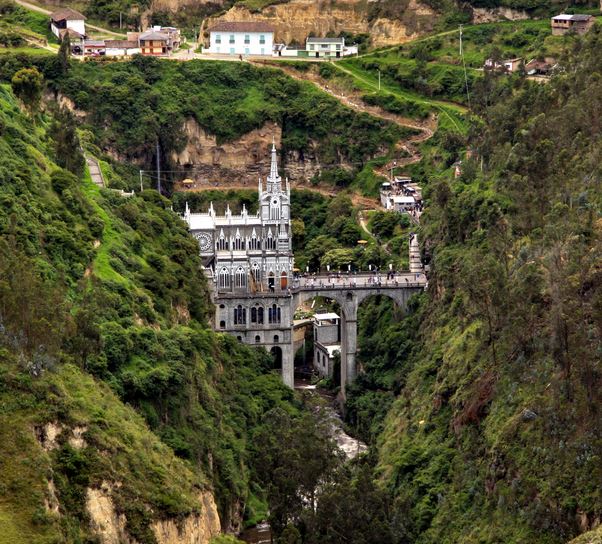
Las Lajas Sanctuary, Ipiales, Nariño, Colombia
Basilica of Our Lady of Dolours, Thrissur, India
The stunningly white Basilica of Our Lady of Delours is located in southern India and is the tallest church in Asia. Construction began in 1929 and was consecrated in 1940, yet the tallest of the towers was not completed until 2007 and was dubbed the Bible Tower. The basilica was built in an Indo-Gothic style with three large towers, the tallest of which is 260 feet high. The red cross atop the Bible Tower is lit at night and can be seen from miles away. The church is dedicated to Our Lady of the Dolours in reference to the Blessed Virgin Mary and the seven sorrows of her life. You can incorporate a visit to Thrissur in our South India adventure.

Basilica of Our Lady of Dolours in India
St George’s Cathedral, Cape Town, South Africa The Cathedral Church of St George the Martyr in Wale Street, central Cape Town, is the oldest Anglican cathedral in southern Africa. It is most famously known as the church of Archbishop Desmond Tutu. In September, 1989, more than 30,000 people drawn from all the race and cultural groups of Cape Town join the archbishop in a mass protest march from St George’s Cathedral. If you visit, notice the stained glass windows that feature both a white Christ and a black Christ. Add this historic cathedral to your South Africa itinerary.
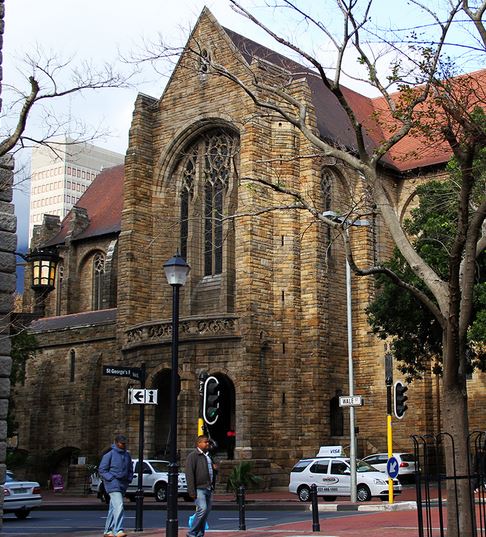
St George’s Cathedral, Cape Town, South Africa
Goeme Underground Cave Churches, Cappadocia, Turkey
Hundreds of early 3rd and 4th century cathedrals were built by Christians among the 36 cave cities, where hundreds of thousands of people lived. Göreme became a monastic center in 300—1200 AD. The open air museum includes half a dozen ancient churches with rich paintings, and monasteries up in the canyons. This region of exceptional natural wonders, is especially known for its fairy chimneys and a unique historical and cultural heritage. Cappadocia is truly a remarkable once-in-a-lifetime experience worth the trip. Discover Cappadocia on our Turkey & Morocco.
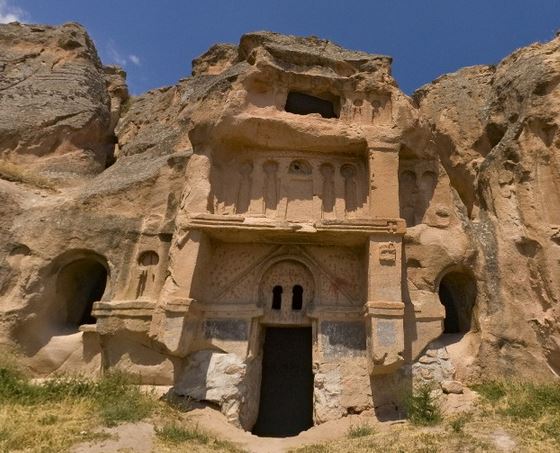
Goeme Underground Cave Churches in Turkey
Cathedral of the Immaculate Conception, Beijing, China The original foundation of this cathedral was set in 1605, making it the oldest Catholic Church in Beijing. The current building in the Baroque style dates from 1904, and is the fourth church on the site. Earlier incarnations were alternately destroyed by earthquakes, fire and the Boxer Rebellion of 1900, which saw the destruction of all the churches of Beijng. The present structure was completed, the fourth church on the site. You can incorporate a visit to this church during our 11-day China journey.
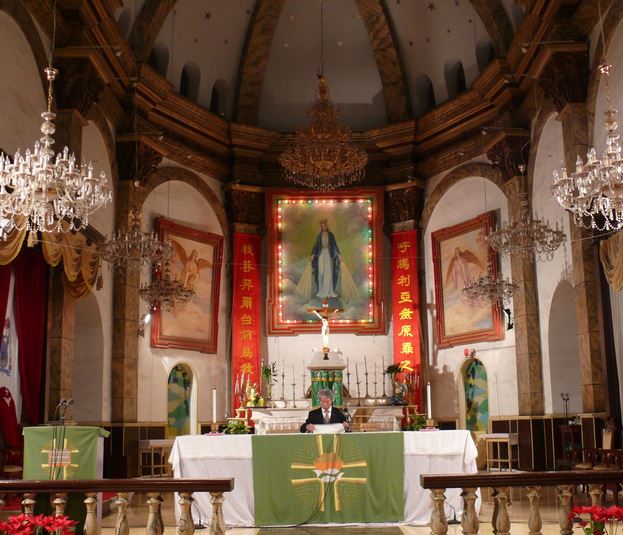
Cathedral of the Immaculate Conception, Beijing, China
This is the time of year when we reach out to you, our families, friends, colleagues and guests, to tell you how grateful we are to each of you, and to say thank you. We wish you many blessings & a happy, safe holiday. The U.S. office will be closed this Thursday and Friday to spend time with our families.
Come Monday, consider wrapping up a great getaway with Big Five’s #CyberMonday offers, which are valid for bookings that originate on Cyber Monday, with booking completed by December 31, 2014. Travel is valid to Dec. 31, 2015.
Book our new 11-day Chile & the Culture of the Mapuche journey on Cyber Monday and receive a complimentary 3-night excursion to Iquique. Explore Santiago, Pucon, Huil Huilo and Atacama.
The first manned hot air balloon happened on November 21, 1783! Two French brothers, Joseph and Etienne Montgolfier, launched their balloon from the center of Paris and it flew for 20 minutes. On January 7, 1793, George Washington was on hand to witness the first launch of a hot air balloon in North America. Today, hot air ballooning has become a popular activity with balloon festivals the world over. You can even visit the National Balloon Museum & U. S. Ballooning Hall of Fame in Indianola, Iowa.
Hot air ballooning offers perspectives you would not otherwise enjoy. Indeed, many of us have that special balloon ride on our bucket lists. We selected five really spectacular balloon opportunities.
Bagan, Myanmar: Imagine an early morning flight over the magnificent temples of Bagan, drifting over the temples of this ancient city giving you views that no ancient king or mystic could have imagined. Dotted with thousands of 800-year-old temple ruins, Bagan entered its golden era in 1057 AD. During the kingdom’s height, more than 10,000 Buddhist temples, pagodas and monasteries were constructed in the Bagan. Today you float above some of the more than 2,200 temples and pagodas that still survive. During our 10-day Myanmar adventure you not only fly over Bagan, you also get a change to explore the ruins by bicycle.
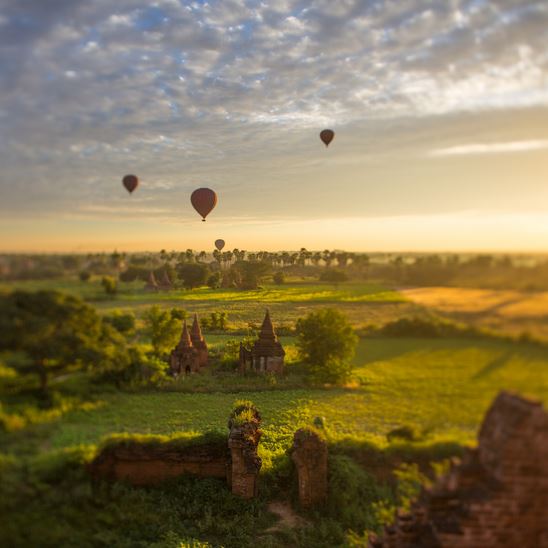
A ride over Bagan, Myanmar
Mendoza, Argentina: Fly above Mendoza’s stunning landscapes and vineyards in the region of foothills and high plains on the eastern side of the Andes. Mendoza is known for its olive oil production and wine making. In fact, the region around greater Mendoza is the largest wine producing area in Latin America. As such, it is one of nine cities worldwide in the network of Great Capitals of Wine. Fly above the stunning landscapes, vineyards and towns. This is also a great spot from which to explore some of the region’s hundreds of wineries located along the Argentina Wine Route. Add a hot air balloon ride to your Argentina adventure.
Marrakech, Morocco: Soar above this imperial city, with its ancient medinas and modern offices, drift over the open desert plains, and settlements, and savor views of the snow-capped Atlas Mountains as the sun rises. This region was inhabited by Berber farmers from Neolithic times, but the city was founded in 1062 AD. Like many Moroccan cities, Marrakesh comprises an old fortified city packed with shops and stalls of the medina, and is bordered by modern neighborhoods, the most prominent of which is Gueliz. Today it is one of the busiest cities in Africa. Add a hot air balloon ride to your Marrakech adventure such as our Morocco: Splendors of the Berber South.
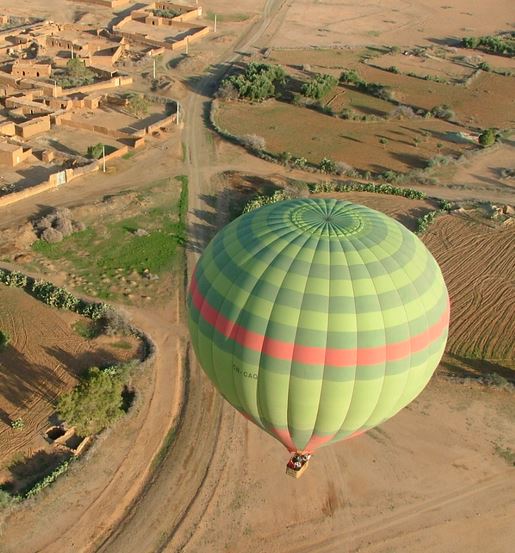
A ride over Marrakech, Morocco
Kafue, Zambia: Kafue National Park is the largest national park in Zambia and the second largest in Africa, covering an area about the size of Massachusetts. The Kafue landscape is ideal for a hot air balloon flight as it slowly floats above the vast Busanga Plains with its sweeping herds of buffalo, large pods of hippos, lone elephants and fantastic lion prides. You’ll pass over a patchwork of lagoons, tree islands and floodplains. Ballooning over Kafue is an extraordinary safari experience, and can be incorporated into our 11-day Zambia journey.
Cappadocia, Turkey: Take a breathtaking early morning flight for a unique aerial view of this stunning area of other-worldly rock formations, subterranean churches and underground dwellings such as the amazing rock formations known as the ‘Fairy Chimneys’. Cappadocia was once a refuge for the early Christians, who escaped persecution by living and worshipping underground. There are an estimated 3,000 rock churches in this region. Include this experience in your visit to Turkey such as our 20-day Turkey and Morocco exploration.
We’ve been hearing from people looking for last-minute holiday getaway ideas. Of course, the most popular destinations fill up the fastest, but we canvased our destinations and actually located some prime pockets of available space!
To get you in the mood, we thought that we’d share some holiday traditions.
Christmas in Ecuador: A traditional Christmas day celebration in Ecuador is a day of colorful processions as the Indians who live and work in the highlands and mountains dress in their finest and ride their brightly arrayed llamas down to their employer’s ranches such as the Hacienda Zuleta. They bring gifts of fruit and produce, which they lay before the image of the Christ manger scene, which is set up in the ranch house. Children also bring their gifts and make pretty speeches to the Holy Infant, asking blessings for their family and their animals. There is a lot of celebrating, singing and dancing outdoors. The owner of the ranch distributes gifts to all his employees and their families. The huge meal includes roast lamb, baked potatoes and brown sugar bread.
New Year in Peru: One of Peru’s most famous New Year’s rituals grapes – 12 grapes should be eaten during the final countdown and people make one wish for every grape they eat. Six of the grapes should be green and six should be purple. Another popular New Year tradition in Peru is the use of yellow underwear: according to the local people, the yellow underwear attracts positive energy for the coming year. And according to the tradition, you have to wear it inside out, and then change it back immediately after midnight!
Tanzania Christmas: While Christmas is not celebrated throughout the country, it is in Dar es Salaam, Tanzania’s capital and largest city. The city’s Catholic Church is decorated with flowers and votive candles. It offers a special midnight mass on Christmas Eve. The malls and offices are decorated with lights and a Christmas tree is placed in public view. Over the Christmas holidays, locals also go out at night to amusements parks, musical gatherings and theatre shows in the local community.
New Year in India: India is mainly Hindu and Moslem, so there is no official celebration of Christmas. However, this time of year is looked upon as an appropriate time for gift-giving and tipping or giving “baksheesh,” charitable hand-outs to the poor of the country. Christians in India decorate mango or banana trees at Christmas time. Sometimes they also decorate their houses with mango leaves. In some parts of India, small clay oil-burning lamps are used as Christmas decorations; they are placed on the edges of flat roofs and on the tops of walls. Churches are decorated with poinsettias and lit with candles for the Christmas Even service.
Thailand Christmas: In Bangkok, Thailand’s holiday tree at the national museum is decorated with cloth dolls dressed to represent the different cultures found in Thailand. A map of the country and the Thailand national flag also adorn the tree. In Thailand, 99 percent of the population is Buddhist so Christmas is not considered an official holiday in the country, except by the small number of Christian schools, businesses and churches. In the larger cities, however, one can now see much evidence of the secular “holiday spirit” in December. Department stores and city streets are adorned with brightly colored artificial pine trees (as large pine trees don’t grow in Thailand), images of Santa Claus and Rudolph, and more. Familiar western carols can be heard in crowded shops. Many Buddhist Thais choose to celebrate Christmastime not as a religious event, but simply as a chance to gather with friends and family and deliver gifts and best wishes for the coming year.
I wanted to take an opportunity to reach out to you today because of the challenges Africa is facing due to fallout resulting from the tragic Ebola outbreak in Western Africa.
When this situation first developed, the first challenge was clear – to assist those suffering with medical and other necessary support, and to contain the virus. The next challenge is equally daunting with critical long-term implications, and stems from perception and basic geography.
Our world leaders, both at home and abroad, have a responsibility to be the voice of reason. We in the travel industry have come together, competitors and friends alike, in a common cause to support the tourism destinations in Africa, whose economies depend on tourism revenue for their survival. We have gone to great lengths to provide accurate information about the scope as well as the distances involved.
People are beginning to understand. But even as we in the industry are answering fewer questions about catching Ebola; we are now fielding questions about whether or not citizens of the US or Canada will be allowed back into their respective countries. These fears are exacerbated rumors about our borders being closed to anyone returning from Africa.
I urge you to become the leaders that we need on the home front. When our elected leaders choose to stay quiet or take the opposite tact of political grandstanding, it is up to each of us to be the beacon of leadership.
This is so crucial because right now there is a major battle playing out behind the scenes that could have severe consequences. Poaching of endangered species. While the effects of poaching due to the slowdown in tourism to Africa will not be known for many months, the warning signs are all there.
If you have not already read the recent article in The Daily Beast, “Ebola Could Deal a Deathblow to Africa’s Wildlife,” you will find it, along with other articles, in our Media Center. In it, I and several noted conservationists based in Africa talked about tourism as the single biggest resistance to poaching in Africa. I urge you to share this letter with your clients, your peers, even local leaders in your community. We hope you will also repost the article to your social media outlets to help spread the world. This reaches far beyond an individual, a company or an even industry.
Africa thrives on tourism and it needs our leadership to become the stewards of sustainability as the safari industry begins to recover. In a proposal published on October 27, 2014, The US Fish and Wildlife Service suggested an Endangered Species Act to protect the African Lion stating that they “…face a serious threat to its long term survival.” While the effort is applauded, it comes six years after National Geographic estimated that the population of African lions had dwindled in the last 50 years from over 400,000 to just barely over 20,000 in 2008. The statistics for elephant and rhinos are even more dire.
If the tourism destinations in Africa are to survive, the wildlife and local communities must also survive. For them to survive, we must move beyond half-measures and hesitancy through one of our most important tools – education. Educating ourselves and our clients is the first line, and sharing what we learn with others in our local communities, and our friends and families. I cannot believe that anyone reading this post wants to imagine a time when our children and grandchildren can see a lion, an elephant or a rhino only in a zoo, a book or a museum.
Ashish Sanghrajka
President